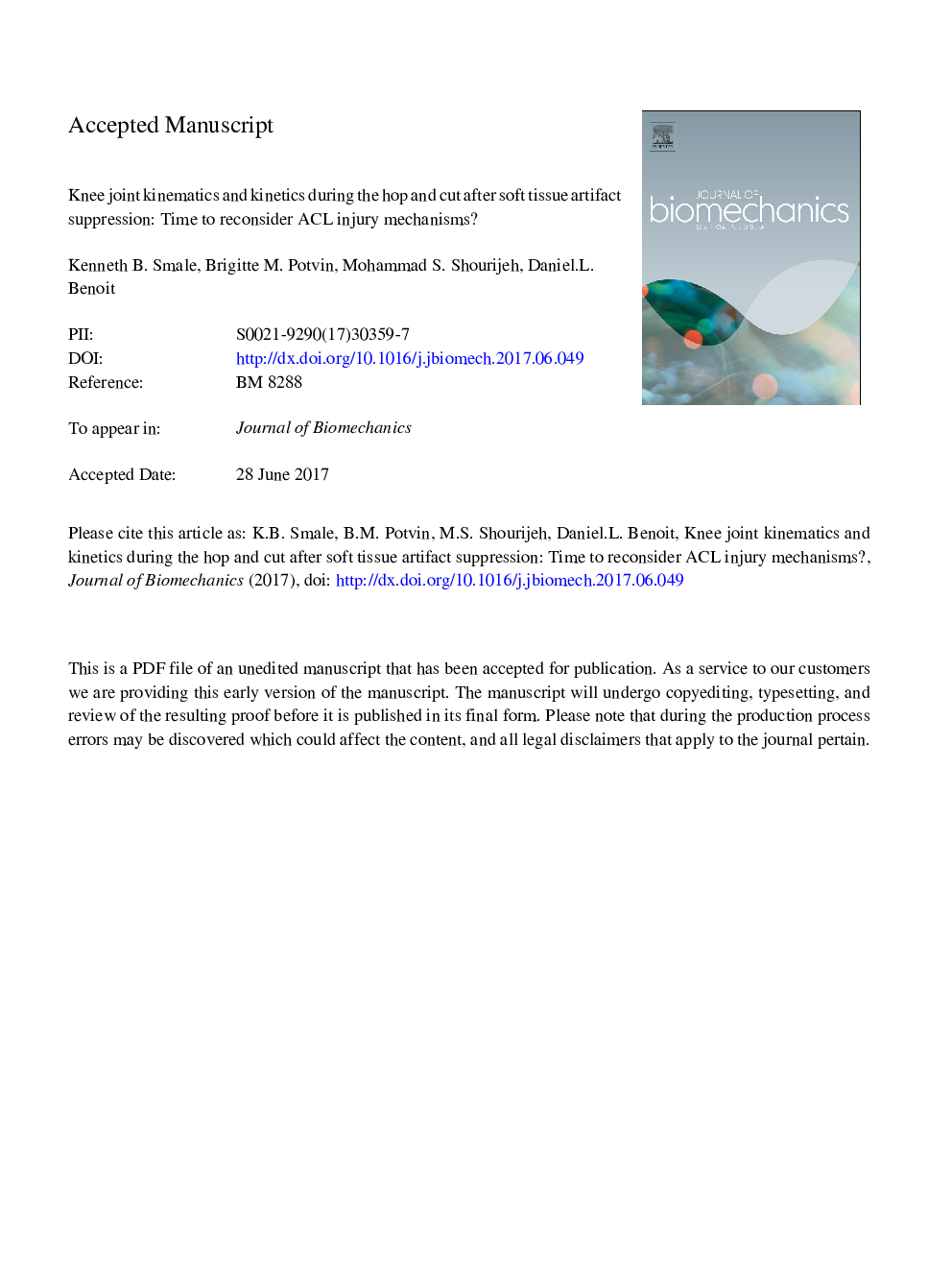| Article ID | Journal | Published Year | Pages | File Type |
|---|---|---|---|---|
| 5031897 | Journal of Biomechanics | 2017 | 31 Pages |
Abstract
The recent development of a soft tissue artifact (STA) suppression method allows us to re-evaluate the tibiofemoral kinematics currently linked to non-contact knee injuries. The purpose of this study was therefore to evaluate knee joint kinematics and kinetics in six degrees of freedom (DoF) during the loading phases of a jump lunge and side cut using this in silico method. Thirty-five healthy adults completed these movements and their surface marker trajectories were then scaled and processed with OpenSim's inverse kinematics (IK) and inverse dynamics tools. Knee flexion angle-dependent kinematic constraints defined based on previous bone pin (BP) marker trajectories were then applied to the OpenSim model during IK and these constrained results were then processed with the standard inverse dynamics tool. Significant differences for all hip, knee, and ankle DoF were observed after STA suppression for both the jump lunge and side cut. Using clinically relevant effect size estimates, we conclude that STA contamination had led to misclassifications in hip transverse plane angles, knee frontal and transverse plane angles, medial/lateral and distractive/compressive knee translations, and knee frontal plane moments between the NoBP and the BP IK solutions. Our results have substantial clinical implications since past research has used joint kinematics and kinetics contaminated by STA to identify risk factors for musculoskeletal injuries.
Related Topics
Physical Sciences and Engineering
Engineering
Biomedical Engineering
Authors
Kenneth B. Smale, Brigitte M. Potvin, Mohammad S. Shourijeh, Daniel L. Benoit,
